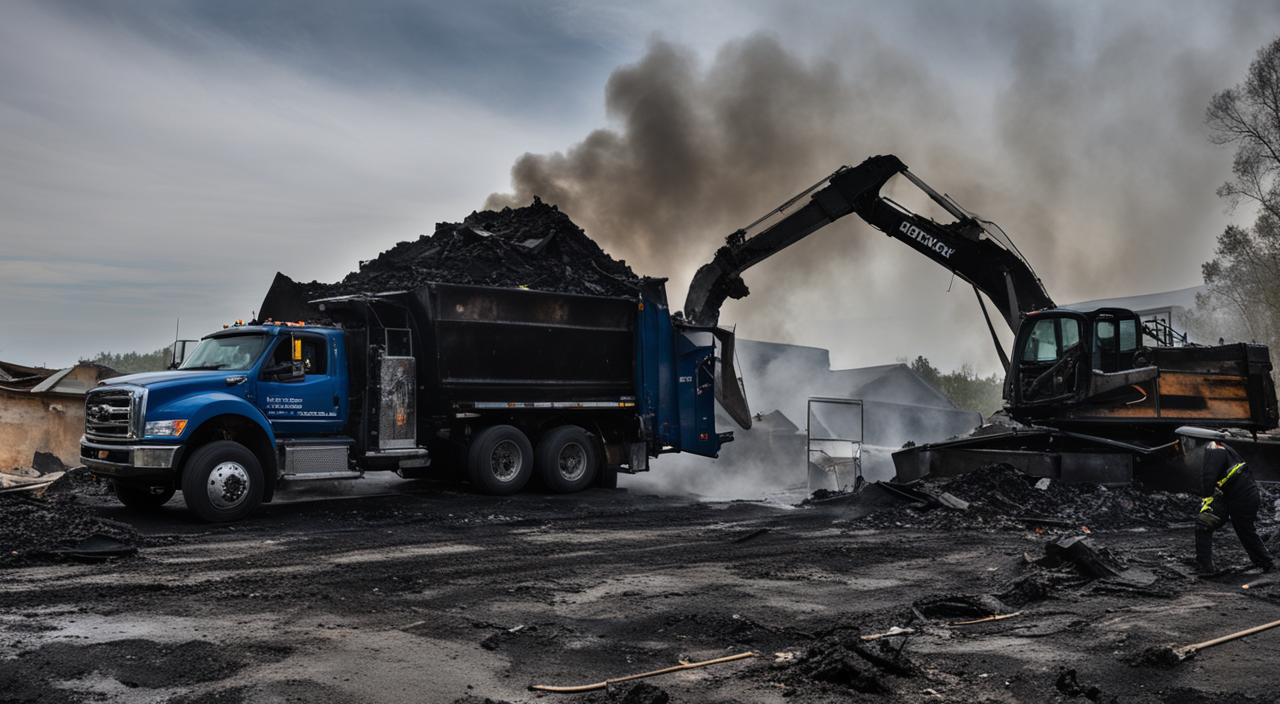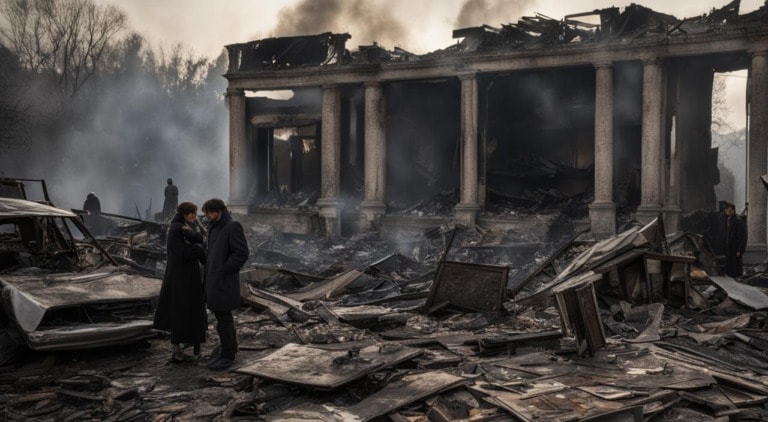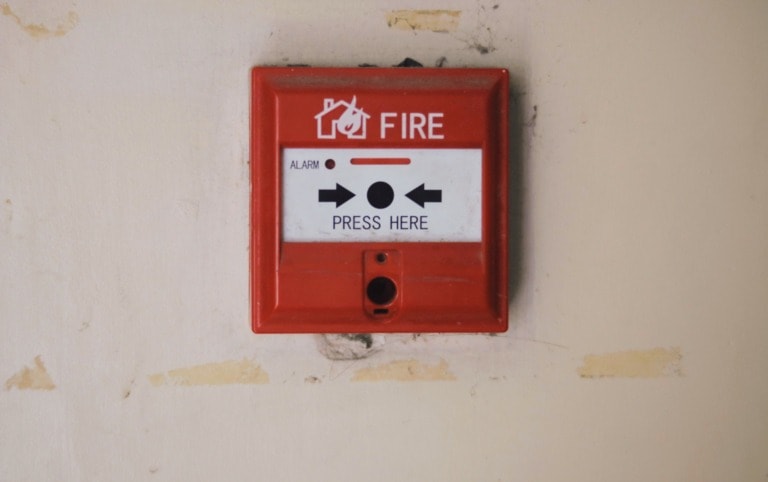
Debris removal after a house fire is an essential step in the recovery process. Homeowners’ insurance policies typically cover the cost of debris removal as part of their coverage for fire damage. This coverage includes liability coverage and personal property coverage, which usually includes debris removal.
However, it’s important to check the specific policy language and coverage limits of your insurance policy to understand what types of claims are covered.
Debris removal involves cleaning up the fire scene and removing damaged items, such as personal property and furniture. It is recommended to consult a qualified contractor for debris removal to ensure proper handling of hazardous materials.
If your policy does not cover debris removal, you may have to pay out of pocket. The standard allowance for debris removal after a fire is typically 10%, plus the cost of removing the damaged structure.
It is advisable to document the fire damage by taking pictures before the debris is removed, including the damaged items and the damage caused by firefighters during the firefighting process. If you have concerns or disputes regarding your insurance claim for debris removal, consider seeking help from a public adjuster to ensure you receive the full benefits you deserve.
What to Do After a House Fire?
After a house fire, it is crucial to prioritize safety and take immediate action. Here are some important steps to follow:
- Safety precautions: Ensure the safety of yourself and your family by waiting for the fire department’s confirmation that it is safe to enter your home.
- Report the fire: Contact your insurance company or agent as soon as possible to initiate the claims process. Provide them with all the necessary details and documentation.
- Hire contractors: It is essential to hire professional contractors or a restoration company to handle debris removal caused by the fire damage. They have the expertise and equipment to mitigate the damage and ensure proper cleanup.
- Document the damage: Before any debris is removed, take detailed pictures of the fire-damaged items, including furniture, appliances, and the overall damage caused by the fire and firefighting efforts. This documentation will be crucial for your insurance claim.
- Assess salvageable items: Work with your insurance adjuster to determine which items are salvageable and can be restored. This will help you maximize your claim value and decide whether it’s more cost-effective to replace or repair certain items.
- Maximize your claim value: To ensure you receive the maximum claim value, engage a public adjuster to assist you with the claims process, negotiate with the insurance company, and protect your rights.
By following these steps, you can navigate the aftermath of a house fire more effectively and ensure a smoother recovery process.
How Much Will Insurance Pay for Debris Removal After a House Fire?
Debris removal after a house fire is a crucial step in the recovery process, but how much will insurance pay for this service? The answer depends on several factors, including your policy coverage, limits, and negotiation skills.
Homeowners’ insurance policies typically cover the cost of debris removal after a house fire.
However, the coverage amount can vary. Some policies set a limit on the amount they will pay for debris removal, often expressed as a percentage of the total claim. For example, your policy may have a 10% limit, meaning they will pay up to 10% of the total claim amount for debris removal.
In some cases, there may be additional coverage specifically for debris removal. This can be included as a percentage of the dwelling coverage or as a separate rider with its own coverage limit. Reviewing your policy carefully to understand the coverage options and limits for debris removal is essential.
Policy limits and negotiation
- Policy limits: Understanding your policy’s coverage limits is crucial when it comes to debris removal. If the insurance coverage is not sufficient to cover the cost, you may need to negotiate with your insurance company or consider paying out of pocket.
- Negotiation: Negotiating with your insurance company can help you receive a fair settlement for debris removal. It may involve providing evidence of the actual cost of debris removal or utilizing the services of a public adjuster to advocate on your behalf.
- Maximum settlement: The goal is to receive the maximum settlement for debris removal after a house fire. By understanding your policy, documenting the damage, and negotiating effectively, you can increase your chances of receiving the full benefits you are entitled to.
Debris removal after a house fire can be a complex process, especially when it comes to insurance claims. It’s essential to familiarize yourself with your policy’s coverage and limits, negotiate effectively, and seek assistance from professionals if needed to ensure you receive the necessary insurance benefits.

Dealing with Debris Removal: Insurance Claims and Beyond
When it comes to debris removal after a house fire, there are important considerations that go beyond simply cleaning up the mess. One of these considerations is hazardous material removal and disposal. It’s crucial to address these issues to ensure the safe and proper restoration of your property.
If your house fire resulted in damage to the foundation, it may need to be removed, and the soil underneath may require re-compacting. These necessary expenses should be covered under your insurance policy, but it’s important to review any exclusions and policy limits that may apply.
To protect yourself during the debris removal process, it’s recommended to take photographs of all recognizable items in the debris before they are taken away. This includes items that your insurance company may remove for cleaning or salvage.
Coordinated debris removal programs may be available through your city or county, offering cost savings and quality control. Before participating in such a program, it’s essential to obtain written confirmation from your insurance company and the city or county that you will be fully protected, even if the cost exceeds your policy limits.
Additionally, documenting every step of the debris removal process will help ensure that you receive the necessary insurance benefits.
Throughout the rebuilding process, it may be beneficial to seek guidance from a public adjuster to navigate any disputes and ensure that you receive the full benefits you are entitled to for debris removal after a house fire.






